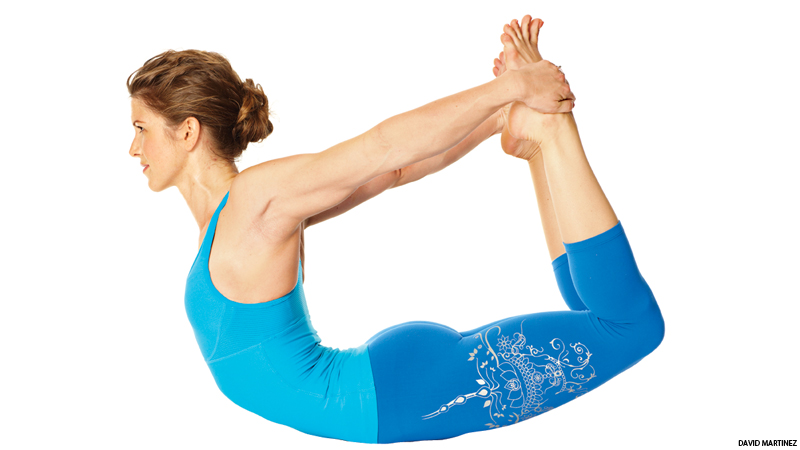
Bryant Park Yoga is back in New York City for its 12th season, featuring teachers curated by Yoga Journal. This week’s featured instructor is Alexandria Crow, who taught at Bryant Park last week.
There are many parts of the body that can limit a student’s ability to approach Bow Pose (Dhanurasana): tight shoulders, pecs, quads, hip flexors, and/or abs could be the culprit, or weak hamstrings, glutes, and/or back muscles. Usually, the first instruction a teacher gives (and I’m guilty of doing this in the past, too) is, “Reach back and grab your ankles,” but when you enter the pose this way, all of the limitations mentioned above take over, and it makes the last step of the pose the most important. At my Bryant Park class, I decided to teach Bow Pose in my new “backwards” way, which turns the pose into an effective backbend that actually benefits all the tight and weak places that might be holding you back.
SEE ALSO 5 Outdated Alignment Cues
10 Steps To Get More Out of Bow Pose
Try it
1. Lie down on your belly, forehead on the floor, arms by your sides, palms down, and toes pointed.
2. Separate your feet so they are hip-distance apart. Straighten your knees and reach back through your feet, sliding your toes away from you as if you could make your legs longer.
3. Tilt your tailbone toward your heels to bring your hips and lower back to a neutral position.
4. Within your shoulder, turn the arm until your bicep faces straight down, then use the back of your arms and shoulders to lift your arms up so they’re hovering next to the sides of your ribcage.
5. Use your upper back muscles to begin to reach your ribcage forward, beginning at your lowest back rib and working up through the mid ribcage and eventually the neck, arching your upper back and lifting your chest and head off the floor.
6. Start pressing your arms behind your ribcage, keeping the biceps facing down.
7. Keeping your knees straight, press your thighs away from the floor. Use your hamstrings to lift your quads.
To keep reading visit YogaJournal.com






